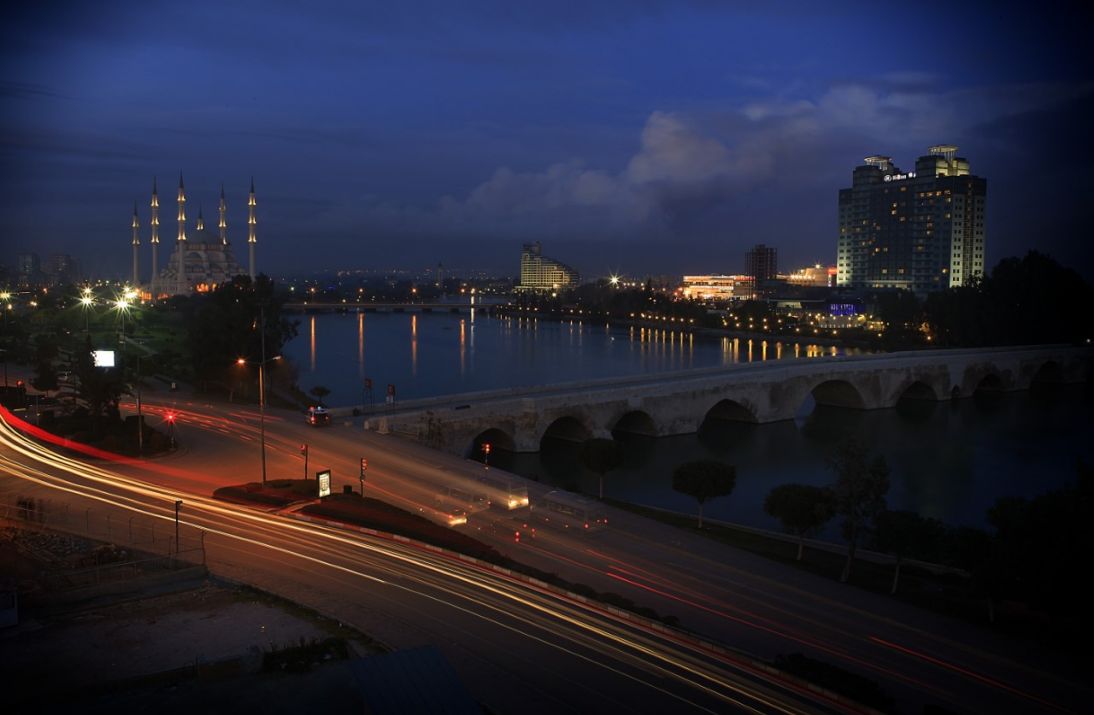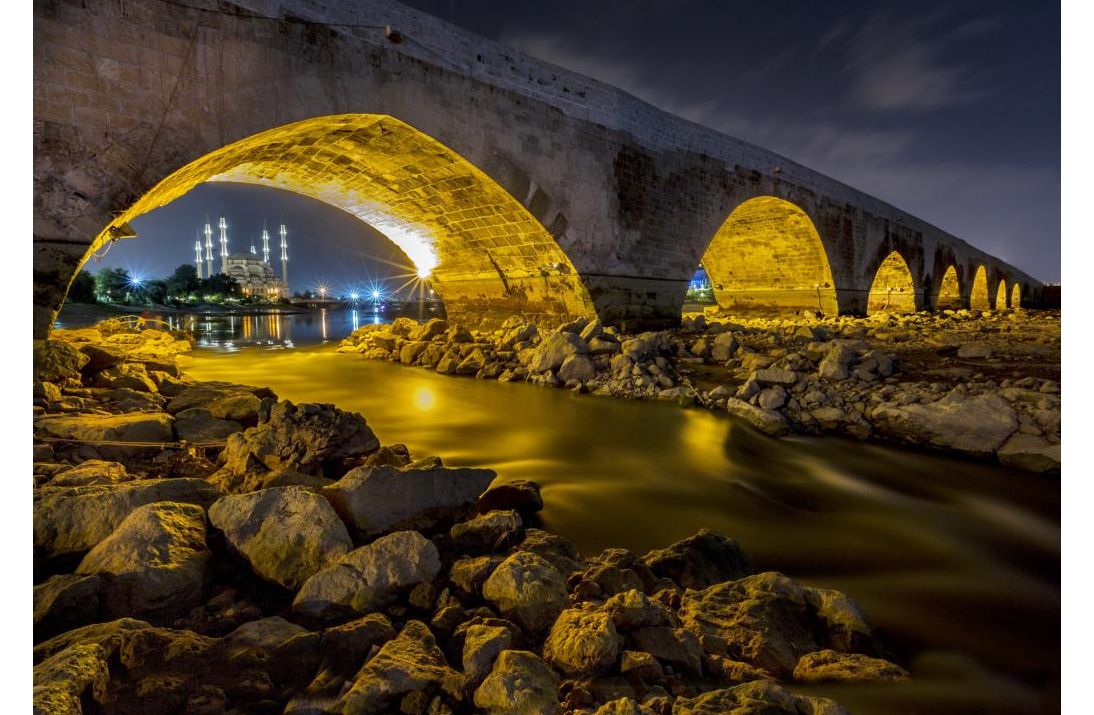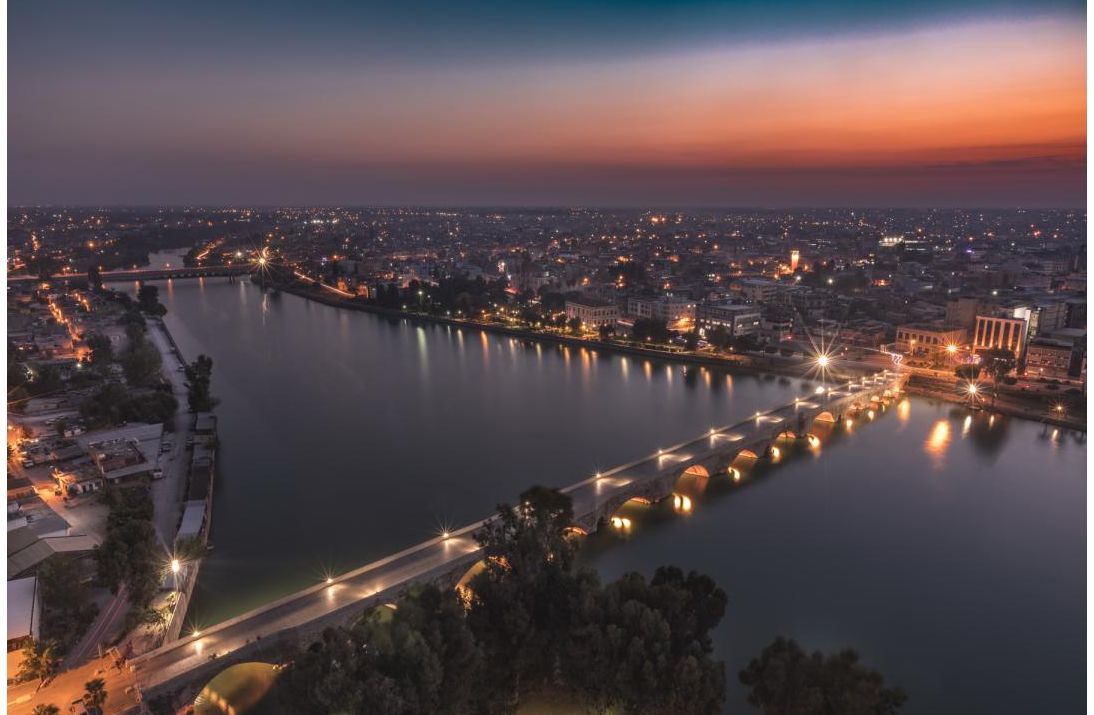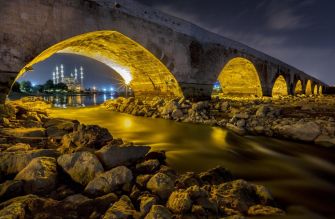Taşköprü (Stone Bridge)
Adana is home to two of Turkey's 13 most important bridges, with Taşköprü (meanig stone bridge in Turkish) and Varda Bridge. Taşköprü is known to be "the oldest bridge in the world still in use". When you think of Taşköprü, Adana comes to mind; When Adana is mentioned, Taşköprü comes to mind. Therefore, it would be appropriate to say that Taşköprü is the symbol of Adana.
Taşköprü, located on the Seyhan River, connects the two important central districts of Adana, Seyhan and Yüreğir.
History of Taşköprü
It is estimated that the stone bridge was built by the architect Auxentios during the reign of the Roman Emperor, Hadrianus. The name of this architect is included in an inscription describing the bridge in the Adana Archeology Museum. Based on some historical documents, it is claimed that there was an older bridge in the place where Taşköprü was located during the Hittites period. It is known that the stones for the construction of Taşköprü were brought from the ruins of the underground city in Camili Village of Yüreğir District.
Taşköprü has maintained its importance throughout history and has been the transit point of caravans, armies and rulers traveling from Anatolia to the south and east. The eastern gate of Adana Castle, which was located here in the past, opened to Taşköprü, and the name of the region "Kalekapısı", (meaning castle door) which is used today, comes from here. During the Ottoman period, there was a double-storey building in the middle of the bridge and tax collection was made from here at the entrance to the city. The bridge has undergone various restorations during the Ottoman and Republican periods, and while it was open to vehicle traffic in the past, it was made open to pedestrian traffic only with the restoration completed in 2007.
In the inscription of Taşköprü, which is exhibited in the Adana Archeology Museum, there are statements regarding the consolidation and renovation of the bridge, along with the tughra of Sultan Abdulmecid.
It is stated in Evliya Çelebi's Travel Book that the bridge is 350 feet long and consists of 21 arches. Today, the bridge consists of 16 arches and other 5 remains under the ground. It is for the same reason that Adana mansions, which look as waterfront mansions in old Adana photographs, are located inside today. The river bed appears to be narrowing.
Where is Taşköprü?
Taşköprü connects Seyhan and Yüreğir central districts of Adana and is located in the southern part of the city known as "Old Adana".
How to go to Taşköprü? Directions for Taşköprü
Since Taşköprü is located in a very central location, it can be reached by almost all public transportation vehicles. It can also be reached from Adana Şakirpaşa airport in a very short journey by taxi and public transport.
When to go to Taşköprü? What to do ?
Although Taşköprü can be visited in all seasons of the year, we recommend going there any time other than noon especially in the hot summer season.
It is an important spot to take a photograph together with the Sabancı Merkez Mosque, located in the north of Taşköprü. Taking part in the photos of Taşköprü and Sabancı Merkez Mosque together will be one of the best memories for tourists coming to Adana. Again, the photo with the Sabancı Central Mosque within the westernmost arch of the bridge also creates impressive photographs and an example of which can be seen on our site
Places to see near Taşköprü
Since Taşköprü is located in the historical part of Adana, there are many historical and touristic spots nearby. Starting from Oil Mosque all can be visited respectively with Kazancılar Bazaar, Adana Clock Tower, Ramazanoğlu Mansion, Ziyapaşa Park, Ulu Mosque, Girls High School, Taşköprü, Cinema Museum, Atatürk Museum, Tepebağ Houses, Sabancı Central Mosque, and Adana Merkez Park on foot. Visiting these places in a suitable weather will be a pleasant walk that takes tourists to the past.









